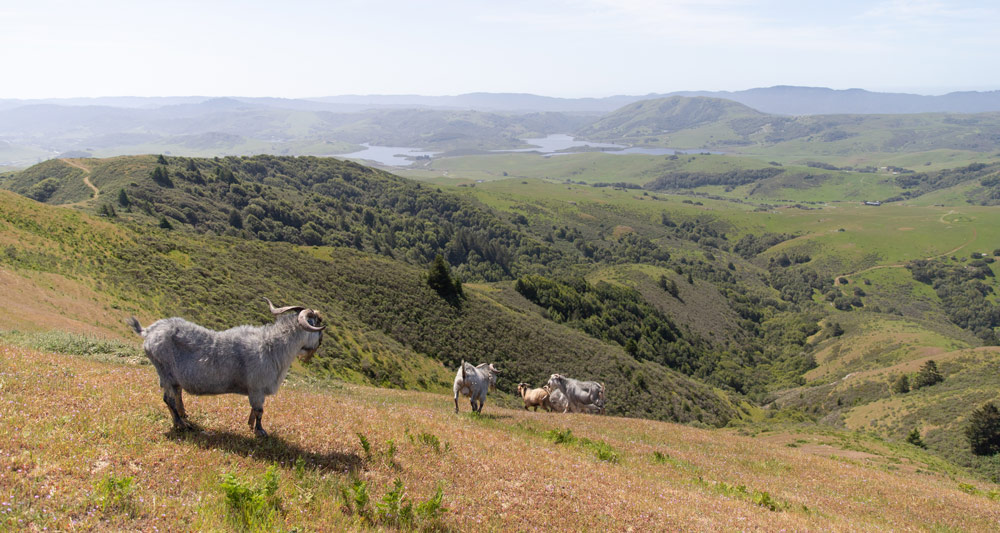Marin Voice: Ranchers play important role in county’s fire-mitigation strategy
October 4, 2023
THIS OP-ED FIRST APPEARED IN THE MARIN INDEPENDENT JOURNAL.
As Marin’s climate gets hotter and drier, the risk of catastrophic wildfires grows. According to CAL FIRE, the largest and most destructive fires in California’s history happened in the past twenty years. We are no strangers to wildfires in the Bay Area, and our elected officials are also recognizing the need to take action on this threat. Over the summer, State Assembly Member Damon Connolly held the first listening session for the Select Committee on Wildfire Prevention and U.S. Congressman Jared Huffman shared resources and updates on wildfire mitigation and climate resilience. This leadership is critical.
The need for community resilience was brought to the forefront once again during the devastating wildfires in Maui last month. As we witnessed in Hawaii, a major component to keep communities safe is reducing fire risk on working lands through vegetation management and stewardship. While much of the focus has been rightfully on the urban-wildland interface and residential defensible spaces, it is also important to recognize the role that well-managed agricultural lands can play in helping protect the North Bay from uncontrolled wildfires, especially in Marin County.

Goats are among the best animals at helping mitigate the risk of catastrophic wildfire. As browsers, preferring to eat what’s available at eye-level, they help control the brush that, once ignited, acts like a ladder carrying the fire to the treetops.
While ranchers and farmers visibly contribute to the food we eat and the fiber we wear, they also strengthen Marin in other ways: protecting creekside, grassland, and forest habitat for biodiversity, connecting our community through job creation, and building climate resilience which includes resilience against wildfires.
Since fifty percent of the land in Marin, totaling 170,876 acres, is comprised of farms and ranches, agriculture plays an oversized role in fire prevention. The majority of this agricultural land – coastal grasslands – is used as pasture for cows and sheep and goats to graze or to grow silage or feed.
Well-managed rangelands reduce fire risk by diminishing fuel loads (flammable material like grass and leaves) through livestock grazing. Grazing animals shorten grass height and prevent shrub encroachment, which reduces the excess fuel loads that stoke massive wildfires.
In addition, well-managed rangelands and forests maintain healthy habitat structure and biodiversity, encouraging water retention in our soils that can act to slow a fire’s progress.
Goats, like the ones we see on the hillsides of East Marin, are among the best animals at helping mitigate the risk of catastrophic wildfire. As browsers, preferring to eat what’s available at eye-level, they help control the brush that, once ignited, acts like a ladder carrying the fire to the treetops.
Without active management and the implementation of grazing or prescribed fire — two of the most common land management tools in the western U.S. — grasses, shrubs, and trees will continue to increase fuel loads, creating a dense tinder box — the ingredients for uncontrolled wildfire.
At the regional level, urban development and the fragmentation of land, including agricultural land, creates numerous threats, including loss of habitat and biodiversity, increased erosion, and higher risk of catastrophic wildfires.
In a very real sense, preservation of agricultural land that’s stewarded with climate-beneficial practices is a form of fire protection. Our agricultural operations and their animals are key to maintaining balance in our grassland ecosystems that, in turn, protect our communities from uncontrolled wildfires.
Stewarding agricultural land in Marin County with climate-beneficial practices is essential to addressing climate change and its effects, including greater fire risks. Fire protection across Marin County’s agricultural lands helps protect the entire county. Conversely, failing to address fire risks anywhere in the county increases the overall risk.
Well-stewarded agricultural land is at the heart of MALT agricultural conservation easements. Pioneered by MALT more than 40 years ago — and replicated by organizations across the United States — the agricultural conservation easement is a tool used to protect farmland and ranches from development and keep them in productive agricultural use forever.
Through MALT’s conservation easements, we are ensuring the land we protect from the threat of development remains in agricultural production in perpetuity. MALT takes seriously the role of protection and conscientious stewardship of agricultural land and wants to make sure it’s included in the mix.
Just as importantly we want to make sure that ranchers and farmers are recognized not only for the fresh food they provide and the local fibers produced, but also for the unheralded role they play in helping protect their neighbors and fellow community members from the threat of catastrophic wildfire.